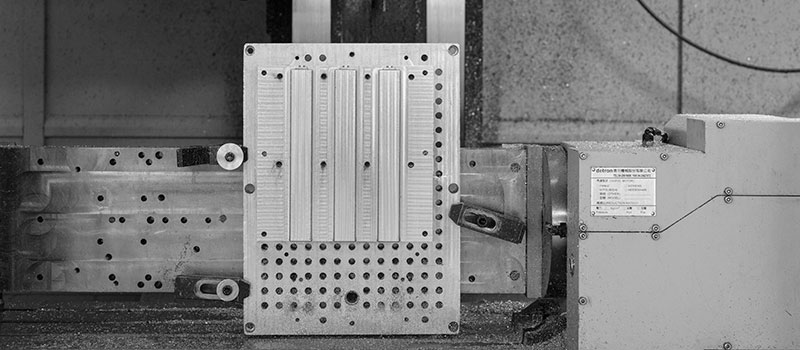Several things can affect the cost of CNC Machining parts, including materials, design, finishes, quantity, and turnaround time. Typically, the most important is how much time it takes to machine your parts. This can influence cost even more than the cost of materials, setup time, or finishing type.
Machining time is directly affected by the materials you select and the design of your parts. Part geometry and tolerances also affect the number and types of machines required, and the skill levels of the machinists needed to use them, which in turn affect costs.
Here are ten tips to help you optimize your designs and make more cost-effective choices that can save money on your next CNC vowin.cn/en/News/news1251.html' target='_blank'>machining project.

Materials influence cost both as raw materials and in terms of how machinable they are. A raw material’s cost can be low, yet if it’s difficult to machine this can end up costing more than a slightly more expensive raw material that’s easier to machine. In general, softer materials are easier to cut so they take less machine time, and can be cut using less expensive tools. Hazardous materials that require additional safety precautions can also add to production costs.
How many units of a component a CNC milling machine makes directly affects the cost per unit: larger quantities reduce that amount, even though the total overall cost is higher. CNC machining is generally most cost-effective at quantities under 10,000. How fast you want parts delivered also affects costs: parts shipped in a few weeks will be more affordable than parts shipped in two to three days.
Surface Finishing and other treatments, such as heat treatments, specialized coatings, and anodizing, add to project costs so they should be carefully evaluated. Multiple finishing processes or different surface finish types on one part also add processing steps, and therefore cost.
A part’s dimensions, including size and complexity, have a big effect on cost. Larger parts consume more material. Complex, highly detailed parts require multiple processes and may also require multiple machines, adding to programming, fixturing, and setup costs. Some complex parts, such as those needing operations on multiple faces, may be less expensive to produce if designed as separate components joined together after machining.
Parts with overly thin walls — often defined as thinner than 0.794mm (1/32 in.) — are not a good choice for CNC machining. Walls that thin can cause distortion, making it difficult to maintain tolerances. They can also cause chatter, slowing down machine speeds. Both lead to additional costs in machine and operator time. Other manufacturing methods, such as sheet metal fabrication, may be more cost-effective for constructing walls thinner than this minimum.
Parts designed with deep internal cavities, often called deep pockets, are a good example of how part geometry affects cost in machining time and material quantities. These designs can require many hours of machining to remove enough material to create the cavities, which can result in wasted material, and difficulty removing chips. The long, thin cutting tools required to create these cavities may also break easily. A best practice is to keep part length a maximum of four times the part’s depth.
To ensure your design doesn’t slow down machining tools, let them do what they already do automatically. Tools like milling cutters and end mills automatically leave rounded internal corners, and the wider the corner’s radius the less material the tool must remove, reducing passes. Narrow inside corner radii with length-to-diameter ratios greater than 3:1 need more passes and special small tools, increasing machining time and requiring tool changes. You can also reduce machining time and tool changes by maintaining the same radii for all internal corners.
Not every surface of a design needs tight tolerances, and too many unnecessary ones increase a part’s overall cost. Usually, numerical callouts are only required for the surfaces and features that are absolutely critical to a part’s function, where it interfaces with others. Less important features can be machined using the standard tolerance of +/- 0.127mm (+/- 0.005 in.).
A design that uses standard tap hole sizes and standard drill sizes helps cut costs in several ways. For tap holes, both tap size and thread depth can increase costs. Threaded holes smaller than a 2-56 in. size will require hand tapping, adding time and labor costs, so they should be avoided. Standard tap sizes, like the more common 4-40 taps, are usually more available than 3-48 taps, for instance. Threads a maximum of three times the hole diameter are a good rule of thumb, and even lower ratios are better. If threads are too long, tapping time rises and you run the risk of tap breakage.
For drilling, using standard number, letter, or fractional drill sizes can reduce machine time by eliminating the need for reamers or end mills to finish holes to non-standard sizes. Standard sizes are usually typical fractions like 1/4 in. or 1/8 in., or measured in millimeters using whole numbers, such as 2mm or 1mm.
Consulting an experienced machinist or engineer during your design phase to verify the accuracy of your CAD drawings can cost more up front, but save you a lot over the long run. Drawings that are incomplete or inaccurate can lead to manufacturing your part twice to get what you really want, adding time and cost to your project.
Likewise, consulting a knowledgeable manufacturer during your design phase can help you avoid designing parts that are unnecessarily expensive or difficult to machine. Instead, this can help you design a part that is both functional and cost-efficient to manufacture.


